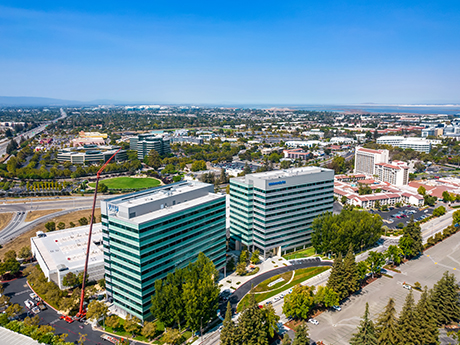— By Kirsten Grado, Toss Vallentine and Wing Lee of JLL —
The resilience of the South Bay/Silicon Valley economy has been tested with the dramatic change in hybrid work formats that enabled employees to work from anywhere. While office vacancy has hit near record levels over the past year, signs of strengthening fundamentals are pointing to a bottoming of the market and a period of opportunity for companies and investors with long-term views.
So, what is marking the signs of optimism?
Leasing activity has continued to improve as companies in technology, professional services, financial services/consulting and other sectors leased 865,000 square feet across 61 transactions in the first quarter of 2024. The largest leases were PwC agreeing to move from downtown San Jose into 141,000 square feet within the top three floors of One Santana West, as well as a confidential tech firm leasing 162,000 square feet at Coleman Highline, also in San Jose. Other notable leases were TDK InvenSense renewing its 82,000-square-foot space in San Jose, as well as KMPG and the 49ers organization each taking about 50,000 square feet of space in new leases in Santa Clara.
Premier space remains in high demand as companies look to upgrade. As proof, about 93 percent of lease transactions in the first quarter involved Class A space. With less new inventory expected to deliver over the next few years, Class A properties are seeing increased demand from tenants that are ready to act on competitive pricing.
Occupancy gains overtook losses for the first time in three quarters, bringing a positive start to the market’s New Year. Total vacancy fell 30 basis points quarter over quarter to 21.9 percent, similar to peaks during the Great Financial Crisis. Availability appeared to approach its bottom and has been hovering just below 24 percent for the past four quarters.
Sublease activity gained considerable traction throughout the past couple quarters, with nearly 1 million square feet absorbed. This made a major dent in space unloaded after the pandemic. An even healthier turn came in the first quarter of this year as subleases accounted for a declining percentage of deals versus new space. The sublease share of total availability declined 6.5 percentage points from 32.2 percent in the third quarter of 2023 at the highest point to 25.7 percent in the first quarter of 2024.
Small- and medium-sized firms and startups are taking advantage of cost-effective real estate that should support their business plans, locking in rates not seen in several years. More than 84 percent of leases in the first quarter were 20,000 square feet or less, by deal count.


